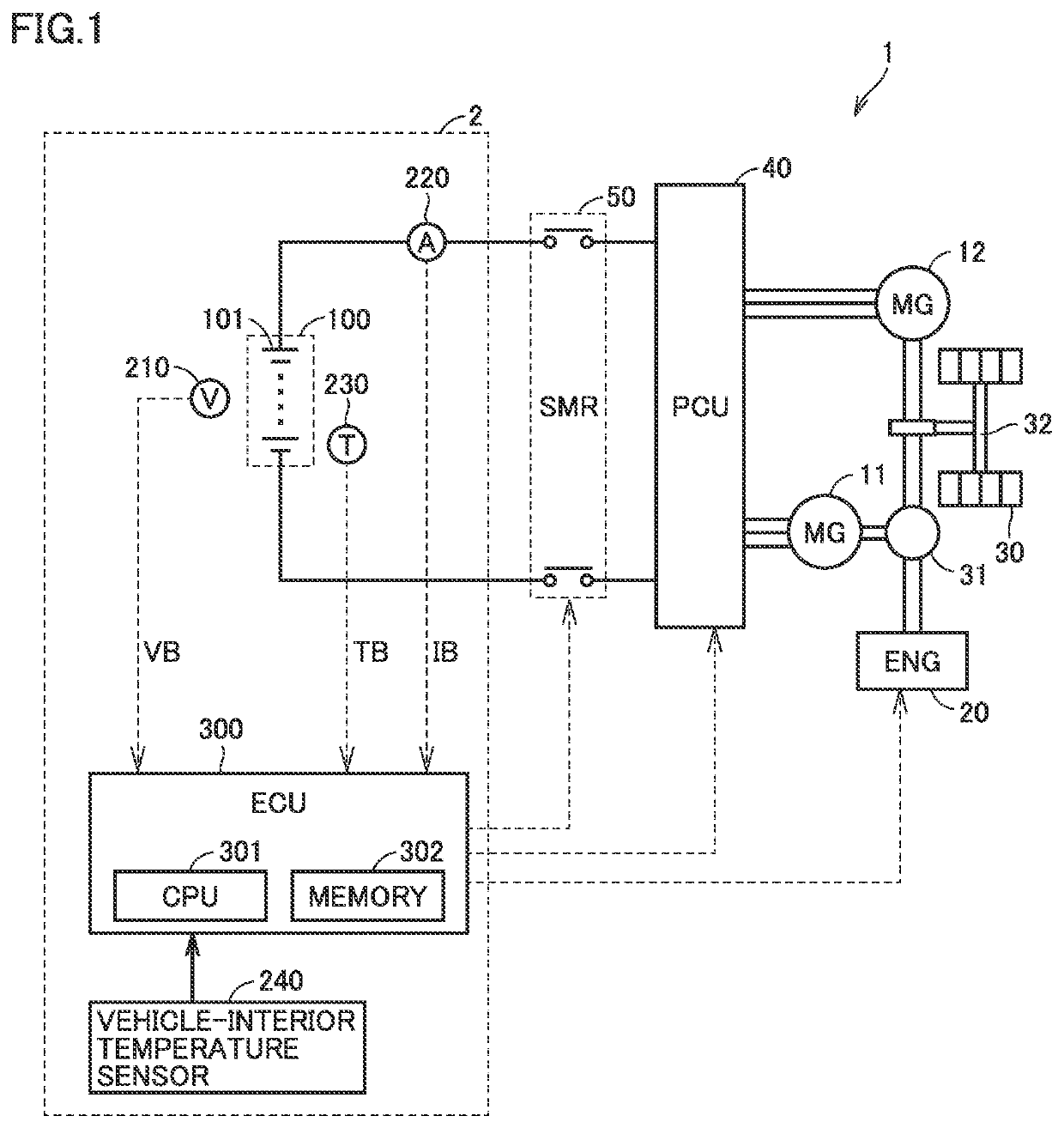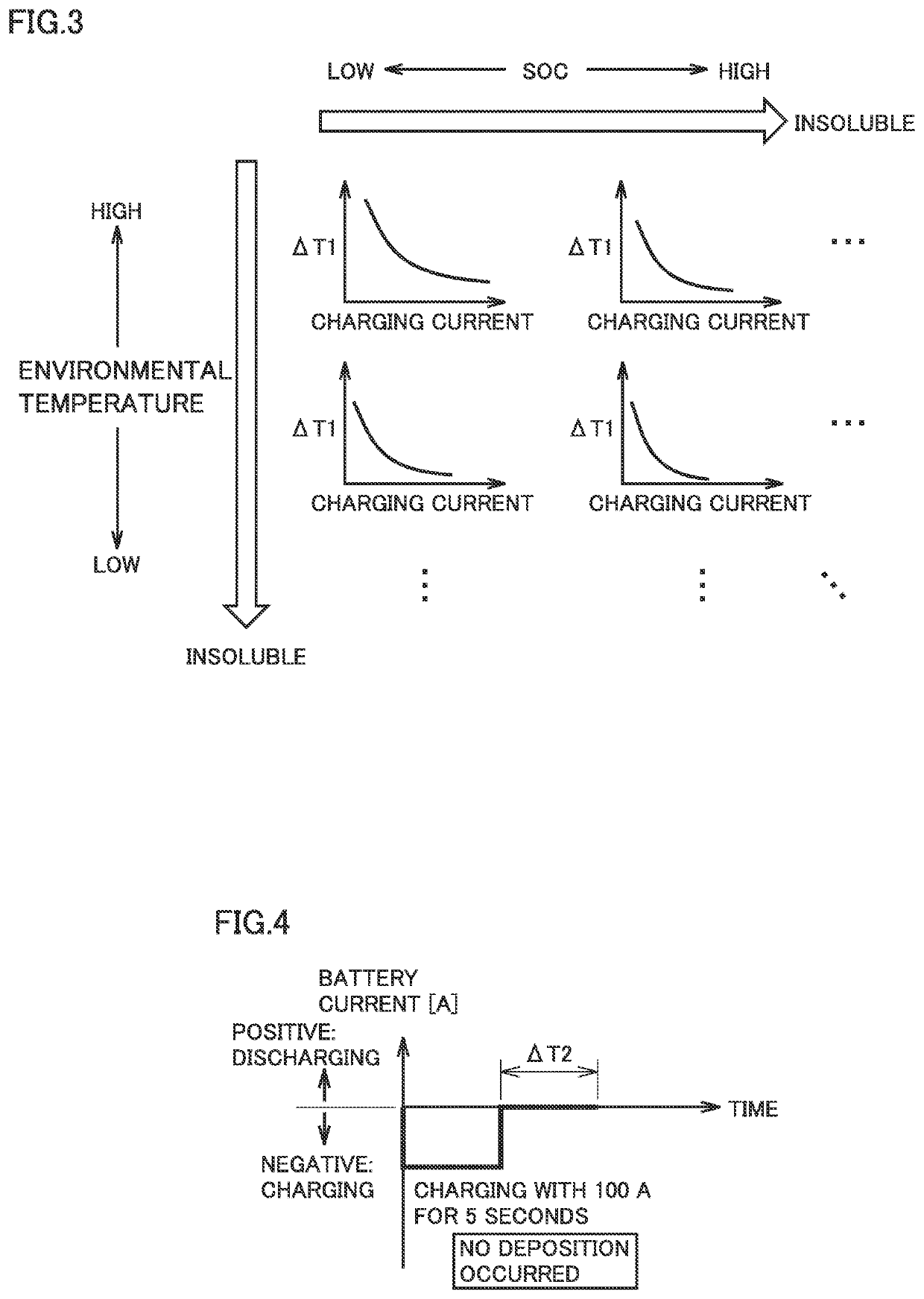Lithium-ion second battery controller for reducing charging loss while preventing deterioration from lithium deposition
a lithium-ion secondary battery and controller technology, applied in secondary battery servicing/maintenance, batteries, instruments, etc., can solve the problems of battery capacity deterioration, increased charging loss, increased charging loss, etc., to prevent battery performance deterioration, increase charging loss, and increase charging loss
- Summary
- Abstract
- Description
- Claims
- Application Information
AI Technical Summary
Benefits of technology
Problems solved by technology
Method used
Image
Examples
Embodiment Construction
[0039]An embodiment of the present disclosure is described in detail hereinafter with reference to the drawings. Identical or corresponding parts in the drawings are identically denoted, and the explanation thereof is not repeated.
[0040]The following describes a case in which a battery controller in the present embodiment is applied to a hybrid vehicle. The application of the battery controller, however, is not limited to a hybrid vehicle but may be an electric vehicle with no engine. The battery controller is not limited to an on-vehicle device but may be a stationary device. Further, the battery to be controlled is not limited to a battery pack which is hereinafter described, but may be a single battery.
[0041]FIG. 1 is a block diagram schematically showing the general configuration of a vehicle 1 mounted with a battery controller in the present embodiment.
[0042]With reference to FIG. 1, vehicle 1 includes motor generators (hereinafter referred to as “MGs”) 11, 12, an engine 20, dr...
PUM
| Property | Measurement | Unit |
|---|---|---|
| charging current | aaaaa | aaaaa |
| time | aaaaa | aaaaa |
| charging current | aaaaa | aaaaa |
Abstract
Description
Claims
Application Information
 Login to View More
Login to View More - R&D
- Intellectual Property
- Life Sciences
- Materials
- Tech Scout
- Unparalleled Data Quality
- Higher Quality Content
- 60% Fewer Hallucinations
Browse by: Latest US Patents, China's latest patents, Technical Efficacy Thesaurus, Application Domain, Technology Topic, Popular Technical Reports.
© 2025 PatSnap. All rights reserved.Legal|Privacy policy|Modern Slavery Act Transparency Statement|Sitemap|About US| Contact US: help@patsnap.com



